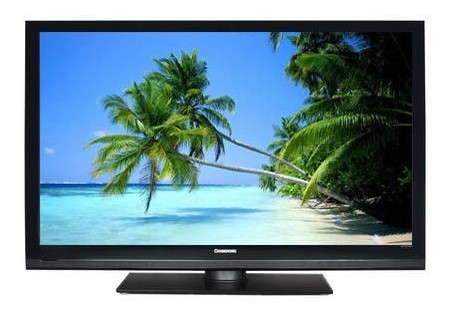Chip will become the focus of future development of smart TV
 In 2012, it was called "Smart TV first year." During the year, domestic brands such as TCL and Skyworth, Japanese brands such as Sony and Sharp, and Korean brands such as Samsung launched smart TVs. Compared with traditional TVs, which only focus on image processing performance, smart TVs are more like a computer. In addition to high-quality, 3D displays, they also have an operating system that allows TVs to be managed through various programs to achieve video on demand. Internet surfing and other applications.
In 2012, it was called "Smart TV first year." During the year, domestic brands such as TCL and Skyworth, Japanese brands such as Sony and Sharp, and Korean brands such as Samsung launched smart TVs. Compared with traditional TVs, which only focus on image processing performance, smart TVs are more like a computer. In addition to high-quality, 3D displays, they also have an operating system that allows TVs to be managed through various programs to achieve video on demand. Internet surfing and other applications. Therefore, compared with traditional TV chips, smart TV chips not only need high-performance image processing ICs, but also require high-performance application processors to run various complicated programs. In a sense, the level of processor performance will directly determine the future market prospects for smart TVs. At present, more and more international processor manufacturers have devoted themselves to the smart TV chip market. High-performance, multi-core cores have become the development trend of smart TV chips.
Application processor makers are marching into smart TVs Smart TVs and mobile devices have become more and more similar to each other. Intel, Qualcomm, Marvell and others have entered this market.
As the new generation of smart TVs will support higher-end operating systems, with naked-eye 3D display, ultra-high-definition (4k) display, multi-screen interaction, and even somatosensory, voice-activated and other advanced features, the demand for processor performance continues to increase, smart TV and mobile The chip's chip development track is getting closer and closer. In order to fully optimize the design of smart TV functions, from 2012, major processors such as Marvell, Intel, Qualcomm, Nvidia, Apple and Samsung entered the market.
Qualcomm has collaborated with Lenovo to develop the high-end smart TV K91 through its 4-core Snapdragon S4 chip; Google’s first-generation chip for GoogleTV is provided by Intel, the second-generation chip supplier is Marvell, and the smart TV S31 introduced by Lenovo has also been selected. Marvell platform. Mobile processor industry is rapidly emerging in the TV market.
According to Shen Jin, vice president of Qualcomm Business Development and general manager of Qualcomm Venture Capital China, Smart TV is Qualcomm's new expansion industry. Qualcomm believes that the focus of Smart TV is to explore "multiple applications", making television a truly interactive device. , The recognition of consumers can make young people return to the living room, and the TV market can have a new look.
Multi-core CPU plus graphics processor into a leading solution Processor industry introduced a multi-core CPU plus GPU solution, and cut into the smart TV field with the same series and different levels of ICs.
Because the industry characteristics of broadcast television are different from those of mobile terminals, previously mobile chip manufacturers were unable to copy the technology into the field of television chips. However, with the development of mobile Internet users habits, mobile user experience has gradually been brought into television applications, so some mobile terminal chip factory began to make some technical changes in their own original chip, and apply it to television.
However, the transition of TV manufacturers to smart TVs requires chip manufacturers to be more open in terms of technical support. Michele Evans Reitz, a Gartner senior analyst, said that with the increasing demand from TV brands for dual-core and above smart TV processors, the application processor industry is bound to develop in this direction with the introduction of multi-core CPUs and graphics processing units (GPUs). The design of the project cuts into the field with the same series and different levels of ICs.
According to Dai Hongjun, a senior industry analyst at Taiwan's Financial Policy Council (MIC), smart TV multi-core processors will appear in 2013. The basic specifications include upgrading the CPU to dual-core and 1.2GHz frequency to meet high-speed Internet access and diversified human-machine interfaces. Applications; GPUs have also begun to move toward dual-core, providing more powerful graphics processing than video codec engines.
In general, the smart TV chip contains two parts: Internet browsing and video encoding and decoding. The network application is biased towards the mobile device processor function, responsible for web browsing, digital processing and execution of applications, etc. The video encoding and decoding is mainly based on the image processing engine, and complies with the calculation methods of broadcast signal standards in various countries to smoothly compile the video. decoding.
From multi-screen interaction to triple-play convergence, multi-screen integration between mobile phones and TVs relies on the integration of client devices such as home gateways, thus creating a new trend of triple-play convergence.
The rapid development of smart terminal devices such as smart phones, tablet PCs and smart TVs has made multi-screen interaction among smart terminal devices a hot technology. China's color TV companies are all committed to developing multi-screen interactive functions and applications for their smart TV products. System operators are also actively developing three-screen systems and terminal products for mutual conversion to achieve true integration of content, networks, and terminals. The multi-screen integration between smart phones, PCs, tablet PCs, and set-top-box TVs depends on the connectivity of home-based servers and gateways, OTT Internet TV/Android/HTML5 and other network client devices, thus creating a new trend of triple play.
Fiber Optic Pigtail,Pigtail Patch Cord,Fiber Pigtail,Pigtail Fiber Optik
Huizhou Fibercan Industrial Co.Ltd , https://www.fibercan-network.com